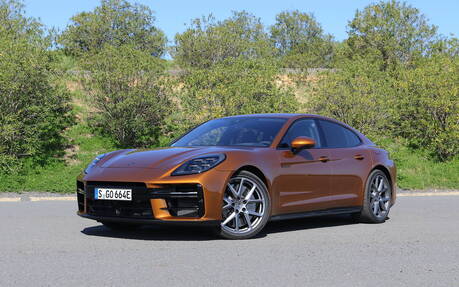2024 Porsche Panamera 4 and 2025 Panamera Turbo E-Hybrid: Evolution and Revolution
Sevilla, Spain—Porsche recently invited auto journalists to test drive the new, third-generation 2024 Panamera 4 on the beautiful roads of Andalusia and later the 2025 Panamera Turbo E-Hybrid on a track.
Notable design changes to the large German sedan are found up front including new headlights and a redesigned bumper with a larger air intake. There are also revisions to the windows, wheels and rear spoiler. Centre-locking wheels are optionally available.
- Also: 2025 Porsche Panamera Adds Two New Hybrid Models
- Also: 2025 Porsche Taycan, Vision Gran Turismo Concept Star in Toronto
Inside, you’ll find an updated centre console, 12.6-inch curved instrument display, available 10.9-inch passenger-side display and revised air vents, not to mention more extensive personalization options. The cabin of the top-line Turbo E-Hybrid model can be finished in an exclusive new accent colour called Turbonite, which also replaces the signature golden badges.
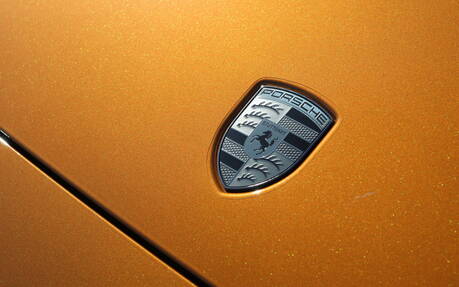
For 2024, the Panamera 4 features a twin-turbocharged 2.9-litre V6 that’s now rated at 348 horsepower (+25) and 368 lb-ft of torque (+37). Power is handled by an eight-speed dual-clutch PDK transmission. Weighing 1,920 kg, the car accelerates from 0-100 km/h in 4.8 seconds, Porsche claims. A dual-chamber adaptive air suspension is standard across the line, complete with dual-valve damping (compression and rebound).
The 2024 Panamera 4 carries a base MSRP of $120,600 in Canada, but our tester in Spain was loaded with options that brought the price north of $180,000. The 130-km trip Porsche had planned included a mix of highways and country roads, some of them no doubt looking like spaghettis from above.
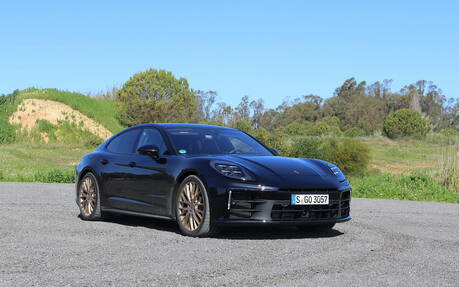
The first thing we noticed and appreciated about the car was the smooth and refined operation. The flexible engine combined with the compliant suspension did a fine job of isolating occupants from the outside world. Beyond the city confines, however, road noise became quite audible, especially on rough, Canadian-like pavement. Other than that, the Panamera 4 proved fairly quiet and pleasant to drive.
Precise steering and powerful brakes also contributed to the experience, the latter having shown no signs of fading at any point during the test. As for fuel consumption, our score of 11.6 L/100 km at the end of the trip was pretty much par for the segment.
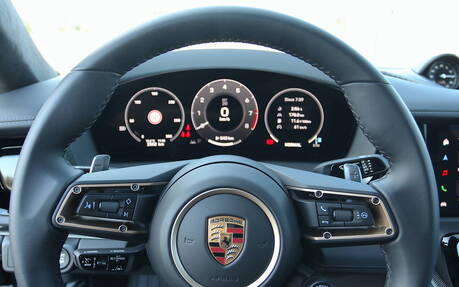
We also liked the material selection, fit and finish inside, as well as the generous amount of space for four adults. You can’t sit a third person in the rear since the seats are separated by a large centre console with a display on it. Comfort is nothing short of regal—we came out of the car feeling quite relaxed after driving for two hours straight.
The infotainment system is smartly designed and mostly hassle-free. That being said, we don’t understand why you have to go through the touchscreen to open or close the side air vents, while those in the middle of the dashboard can still be controlled manually.

Trunk capacity is 494 litres (or 1,328 litres when folding the rear seats), which isn’t the most generous, but the large hatch opening facilitates loading and unloading cargo. By the way, the Panamera Turbo E-Hybrid sacrifices a bit of cargo room (421 litres and 1,255 litres, respectively) due to the battery mounted under the trunk floor.
Top-Flight Performance and Cutting-Edge Tech
Once we arrived at Circuito Monteblanco, we traded the Panamera 4 for the almighty Panamera Turbo E-Hybrid. This model boasts a new twin-turbo 4.0-litre V8 mated to a revised and 5 kg lighter eight-speed PDK that integrates the oil-cooled electric motor. Total output is rated at 670 horsepower (-20) along with 685 lb-ft of torque (+44).

The motor draws energy from a larger-capacity battery (up from 17.9 kWh to 25.9 kWh), resulting in a WLTP-estimated range of 91 km. The EPA rating is not out yet but should land around 70 km.
The most significant technological advancement in the new Panamera Turbo E-Hybrid is not the powertrain but rather the Porsche Active Ride suspension, which keeps body movements in check during acceleration, cornering and braking to enhance handling. It’s similar to the setup that was used on Formula 1 cars in the early 1990s and banned at the end of the 1993 season.

Air springs combine with hydraulic dampers as well as sensors that analyze the chassis 1,000 times per second. A pump sends oil into each damper to control compression and rebound, keeping the chassis as flat and balanced as possible. Adjustments can be made in 50 milliseconds.
Let’s say you’re hitting the brake pedal hard. The system will mitigate nosedive by raising the front end of the car. When accelerating at full throttle, it will lift the rear to prevent the car from squatting. Porsche engineers have also determined specific settings for each drive mode to maximize either comfort or agility. The active suspension will even adjust ride height for easier entry and exit, making for a weird-looking, jacked-up sedan.

But what if something goes wrong? Don’t worry, should the hydraulic pump fail, the dampers aren’t going to suddenly collapse in the middle of a turn on the highway. For one thing, the air springs always work independently to ensure a steady ride. Furthermore, the system is designed in such a way that the damper bodies retain a certain oil pressure in the event the pump stops working.
Time to Play
We would have loved to put the Porsche Active Ride suspension to the test on public roads, but the session was limited to the track, including slalom and emergency braking manoeuvres. We also did a few hot laps, even though that’s something few Panamera owners have on their mind.
One thing’s for sure, with 670 horsepower and 685 lb-ft of torque on tap, performance is seriously impressive. For the record, 0-100 km/h acceleration is achieved in 3.2 seconds. The engine feels super strong and lively regardless of how fast it’s revving. In addition, build quality easily trumps that of the Panamera 4.
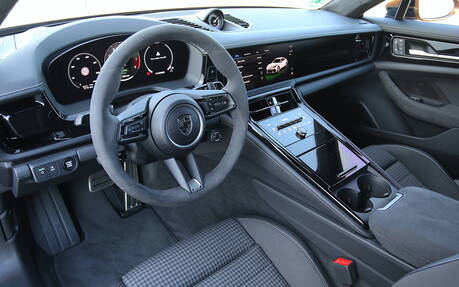
Fascination also comes from pushing the Panamera Turbo E-Hybrid equipped with Porsche Active Ride around corners and feeling your body move in the seat while the chassis remains perfectly flat no matter what. The combination of comfort and handling is just incredible.
It’s the same thing when applying the brakes. You typically expect the nose of the car to take a dive, but not with Porsche Active Ride. The downside is that it’s a bit more difficult to assess exactly how much grip the front tires have and how hard you can attack corners. Come in with too much speed, and the heavy weight (2,360 kg) will soon cause the sedan to understeer. Of course, you can always listen to the tires squealing as they reach their limit which, luckily, isn’t very often.
While tight turns demand some restrain, the Panamera Turbo E-Hybrid proves amazingly fast and stable in long, sweeping corners. Elevation changes are not a problem, either, not even going uphill into a blind turn at more than 150 km/h.
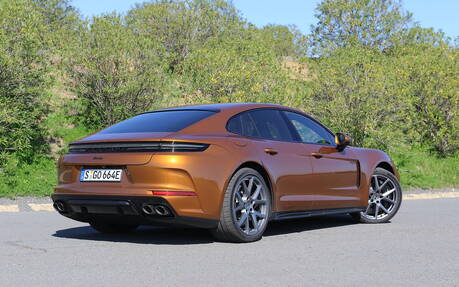
Ultimately, is Porsche Active Ride better than a traditional suspension system? We can’t really say for sure since we drove just 10 times around Circuito Monteblanco and half of those laps were performed at relatively low speeds. It certainly looks like a formidable weapon for track use, as the success of older F1 cars equipped with an active suspension can attest (though many drivers didn’t enjoy how it felt), but we need to wait until we drive the car on the road to get a complete picture.
Pricing for the 2025 Porsche Panamera Turbo E-Hybrid has yet to be announced, but the base sticker will probably hover somewhere between $200,000 and $230,000. Expect the optional Porsche Active Ride suspension to cost a pretty penny, too. Reliability is another question mark. Again, only time will provide an answer.
| Test drive report | |
| Test model | 2024 Porsche Panamera |
|---|---|
| Trim level | 4 |
| Price range | $103,400 – $234,700 |
| Price as tested | CA$120,600 |
| Warranty (basic) | 4 years/80,000 km |
| Warranty (powertrain) | 4 years/80,000 km |
| Fuel economy (city/highway/observed) | 12.9 / 9.8 / 11.6 L/100km |
| Options | N/A |
| Competitive models | Audi A8, BMW 7 Series, Genesis G90, Lexus LS, Lucid Air, Maserati Quattroporte, Mercedes-Benz S-Class, Mercedes-Benz EQS, Porsche Taycan, Tesla Model S |
| Strong points |
|
| Weak points |
|
| Editor's rating | |
| Fuel economy | The Panamera 4 we tested achieved a combined 11.6 L/100 km, which is fairly decent. |
| Comfort | Ride quality is one of the Panamera’s strong cards. |
| Performance | The Panamera 4 is a fine performer. The Turbo E-Hybrid model is simply mind-blowing. |
| Infotainment | The only thing we don’t like or understand is having to go through the touchscreen to open or close the side air vents. |
| Driving | Handling is sharp and the drive is quite pleasant overall despite the heavy weight. |
| Overall | The new Panamera 4 is a lovely evolution with plenty of strong attributes. The Turbo E-Hybrid (pricing TBD) takes the experience to a whole new level. |
